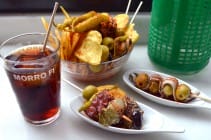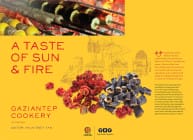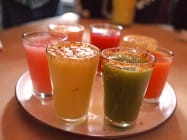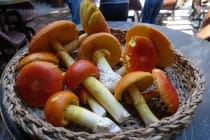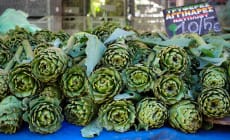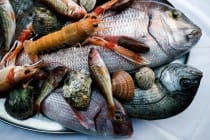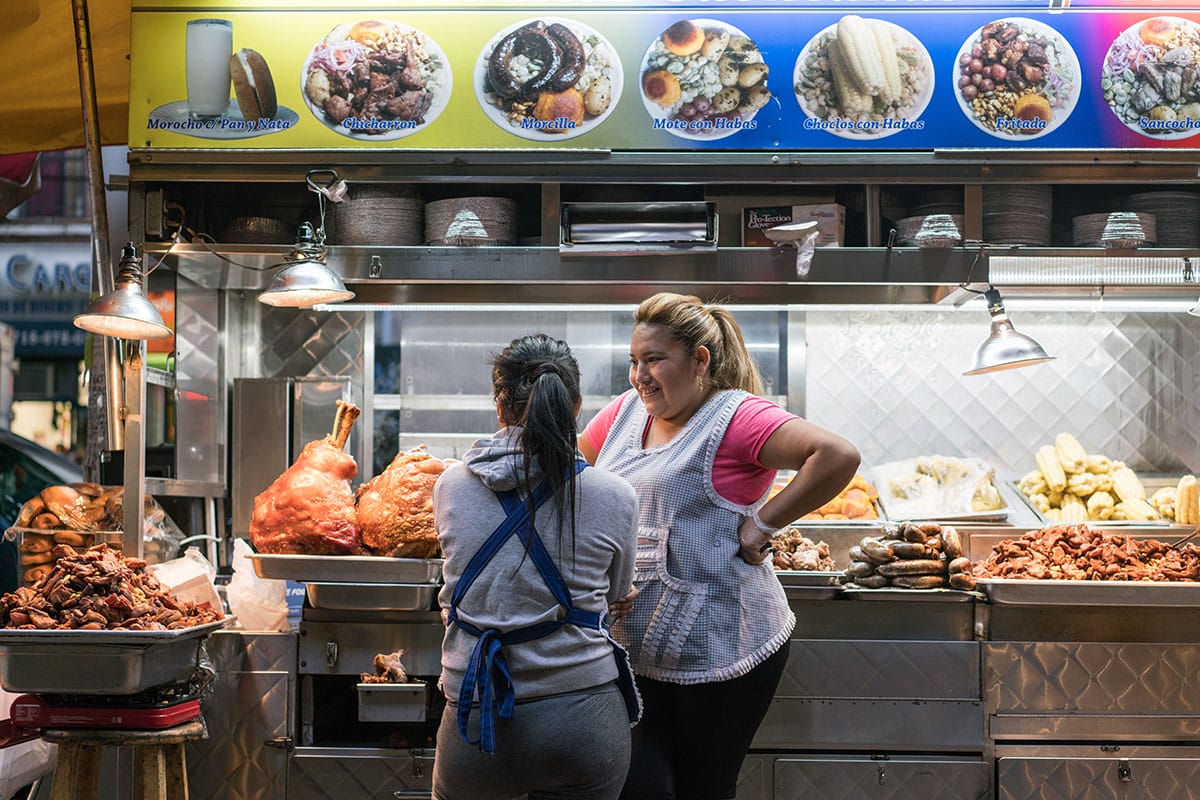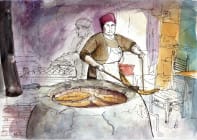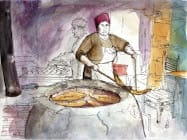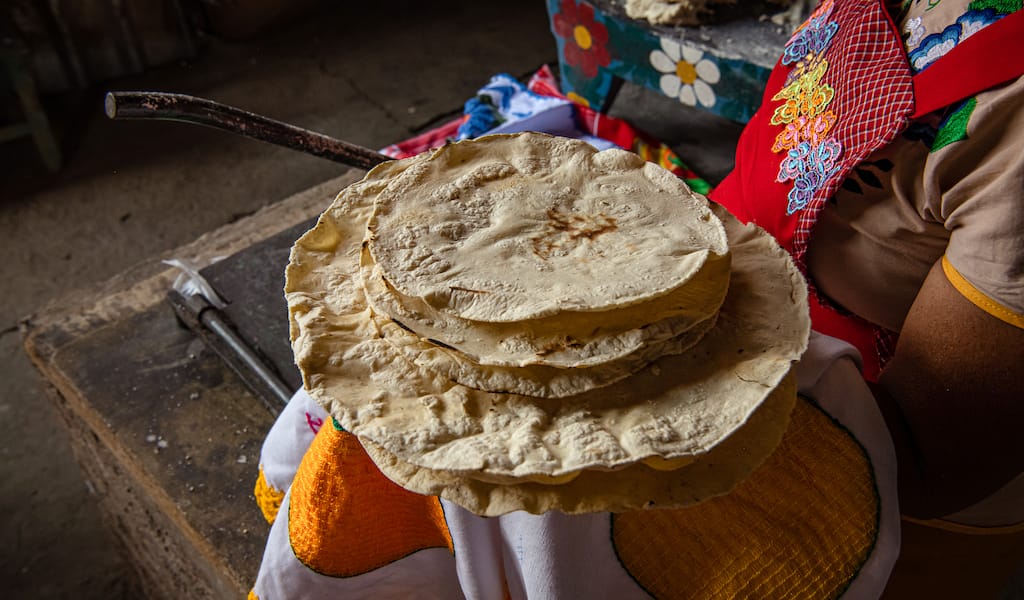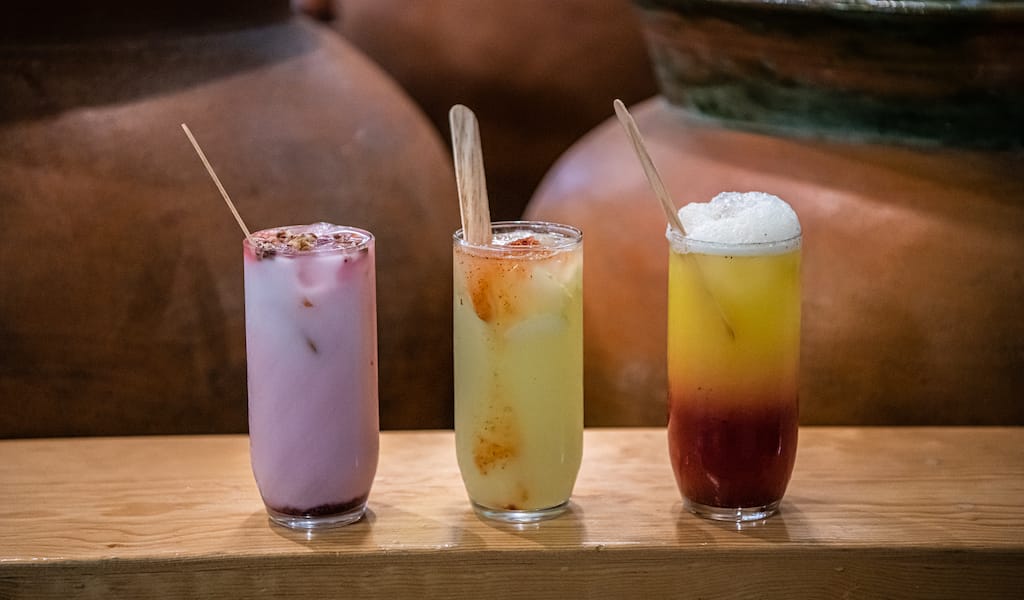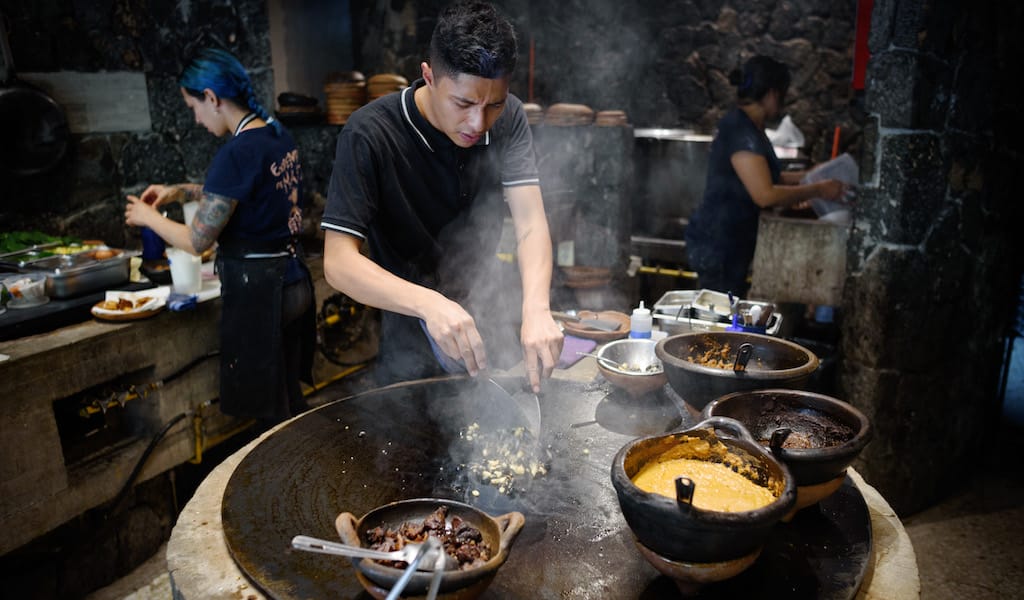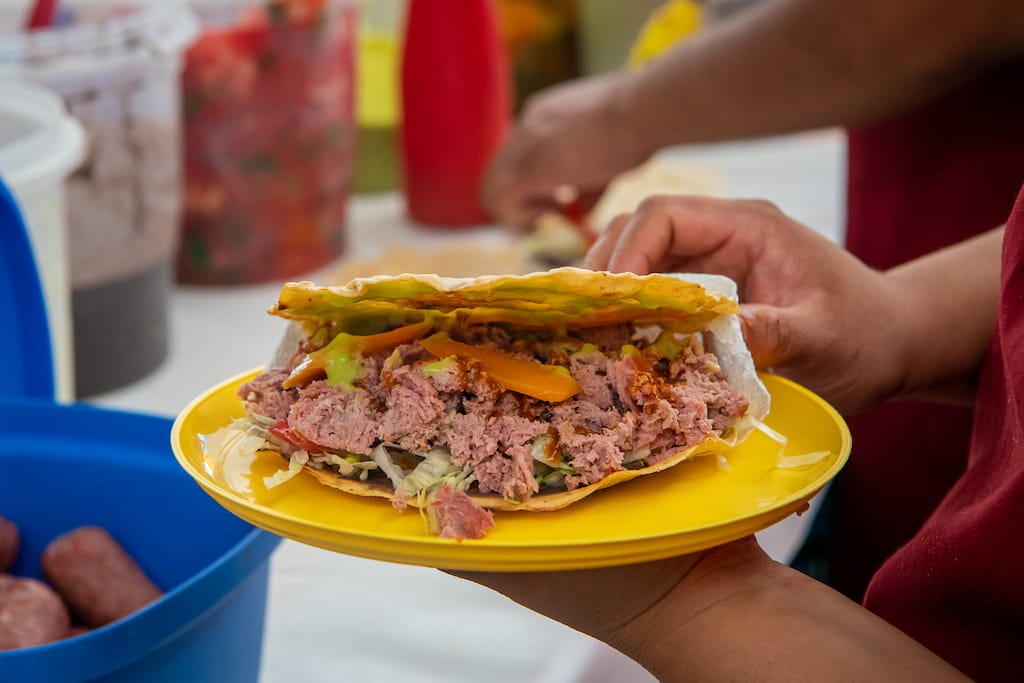Every time we travel outside of Oaxaca, we get something we call “the tortilla blues.” Even if we move around inside of Mexico, particularly in the biggest cities, we cannot help missing the sweet aroma and feel of a warm tortilla almost melting in our hands. Sure, we might run into decadent tacos filled with perfectly cooked meat, or we can taste amazing enchiladas with lush salsa verde. But none of that matters if the tortillas don’t seem to have been touched by the tortillera’s gifted hands.
Everyone talks about the tortilla but not everyone understands it. Supermarkets sell them packed and ready to heat, office workers eat them carelessly at their desks for lunch and only fancy restaurants seem to offer a more authentic version of them. The flavors of tortillas from a wood-fueled clay griddle in an unassuming adobe house in the countryside seem to be long gone. “Modernity is a labyrinth, and corn is the thread that will rescue us from it,” Amado Ramírez Leyva poetically reflects. He is an agricultural engineer, corn expert and founder of Identidad Biodiversidad (IDBI), a cultural movement and set of business initiatives founded in 2001 with the aim of promoting Mexico’s cultural biodiversity and identity around corn.
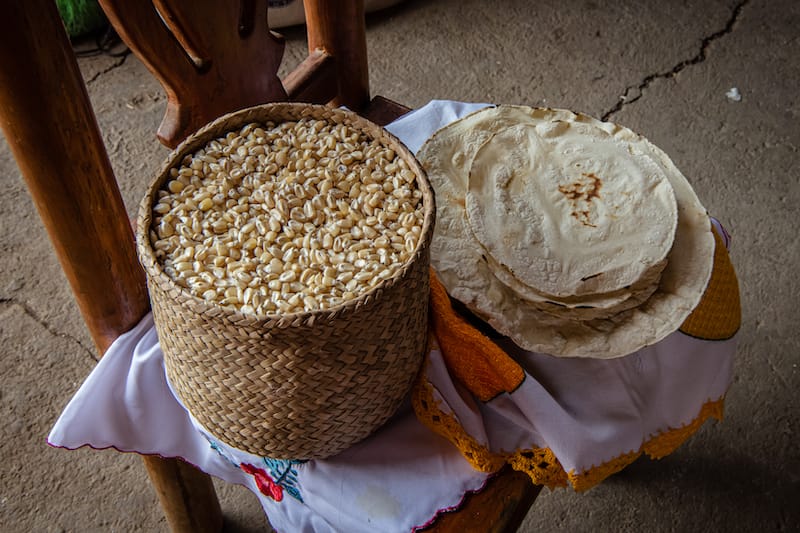
In order to disentangle the DNA of a tortilla, we must reconnect with corn first. Let’s transport back to 3500 to 7000 years ago, in prehistoric times, in a mountain chain full of caves overlooking wild landscapes in what today is the Valley of Mitla, in Southern Mexico. Inside the caves, groups of people domesticate the plant that will become part of the foundation of Mesoamerican culture and, eventually, of a whole country – Mexico. The plant will later be called maíz in Spanish, as well as Xob, Ixim, Tlayóhjli and at least 70 other names in the different native languages of the Mesoamerican cultures. However, this ancestral version of maíz, known as teocintle, is a grass-like, wheat-like plant that easily sheds its seeds and is low in starch and nutrients.
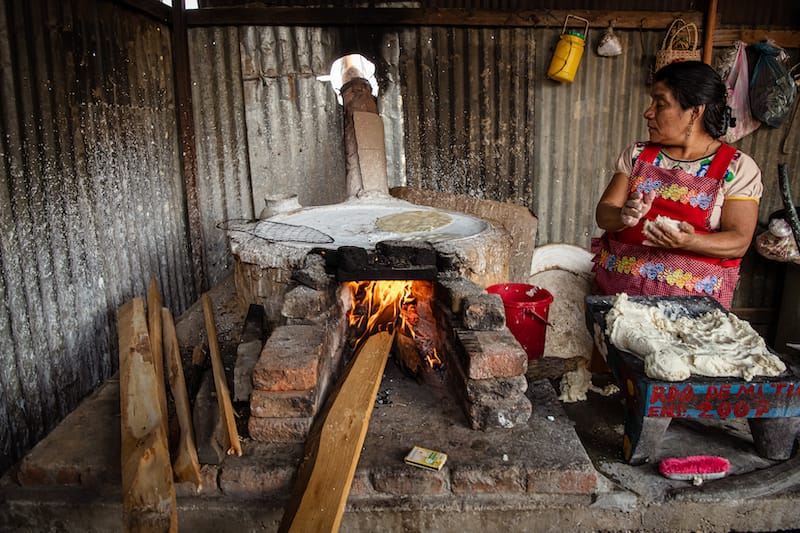
After thousands of years of domestication, teocintle evolved into a larger plant with plump cobs full of grains that needed human hands to be removed. In other words, corn had become a plant that relied on humans to reproduce, while humans relied on the generous grain to survive, but also to give structure to their existence, as they started using corn’s cycle as the calendar that eventually developed a whole set of rituals, myths and ideologies. From that moment on, the domestication process translated into an unbreakable bond between humans and corn, one that prevails to this day, and which can be seen through the grain’s different presentations: in drinks like atole; in dishes like tamales; and of course, in the tortilla.
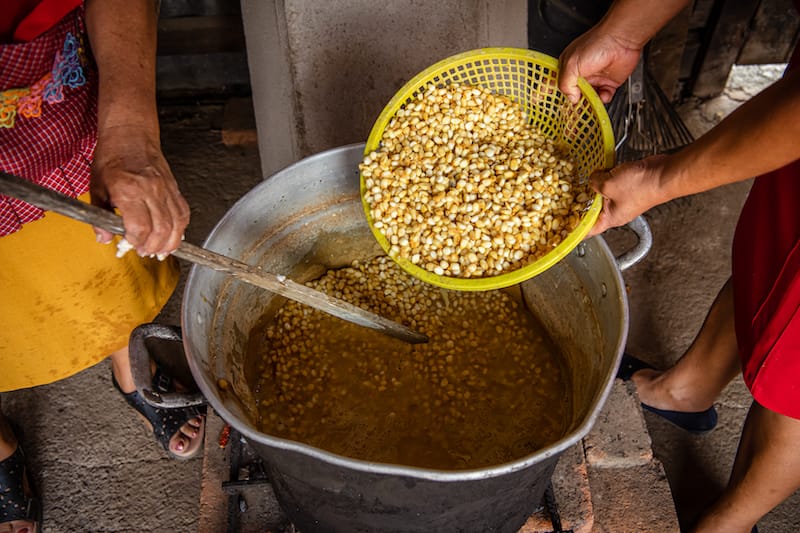
Tortilla is the modern name the Spanish gave to this flat, thin disc of cooked corn dough, but codex made by European priests have registered the name tlaxcalli as one of its original names in the Nahuatl language. Archeologists have located the first traces of tortilla making in the valleys of Oaxaca, from approximately 500 B.C. No wonder Oaxaca is one of the places where we can find some of the most exquisite tortillas in literally every village, market and household of the state, particularly in the rural areas.
The domestication process translated into an unbreakable bond between humans and corn, one that prevails to this day.
“A good tortilla is all about corn, water, limestone, skillful hands and a meticulous process. That is, excellent ingredients, an experienced processor and a sharp process,” explains Amado. Once again, the hands that grow and transform the corn are one of the most important elements of a tortilla. Once harvested, corn grains are soaked and boiled in alkaline water (diluted limestone or ashes) so the corn is ready for grinding, its nutritional value enhanced and easier for the body to digest. This step is known as nixtamalización, and while most researchers think it was an intuitive process, all agree that without the scientific precision of nixtamalization, corn wouldn’t have become as fundamental for Mexican culture as it did. “The tortilla is the circle that integrates space and time, a constant process of life and death is represented through it. Corn dies during nixtamalization. It is through fire and the heat of the cal viva that corn is transformed into the food that sustains our lives” he says. Cal viva literally translates to “live limestone,” because it burns when we touch it.
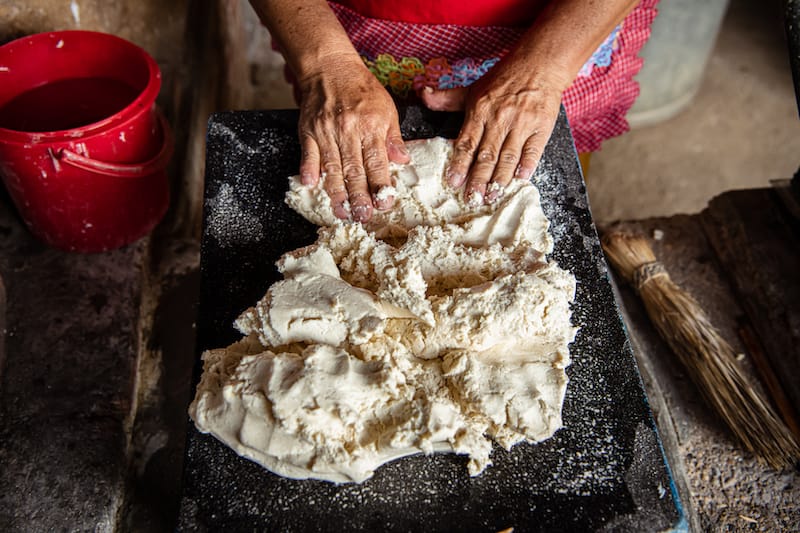
Once the corn has been nixtamalized and ground into a smooth dough, it is pressed into circles and placed onto either an iron or clay griddle until the tortilla puffs up and the dough looks cooked. Reducing the process of tortilla making into these two lines is, of course, an understatement, as it requires years of practice, burnt fingertips and hard work to become an expert in the art of creating perfectly round and thin circles of corn dough.
“When I was 10, we had to make 360 tortillas by hand every day. We grabbed balls of dough and pat them with our own hands until they became perfectly flat and round. It was very hard for our shoulders and back,” recalls Doña María Fructuoso Lorenzo, a 70-year-old tortilla maker from the Tlacolula Valley.
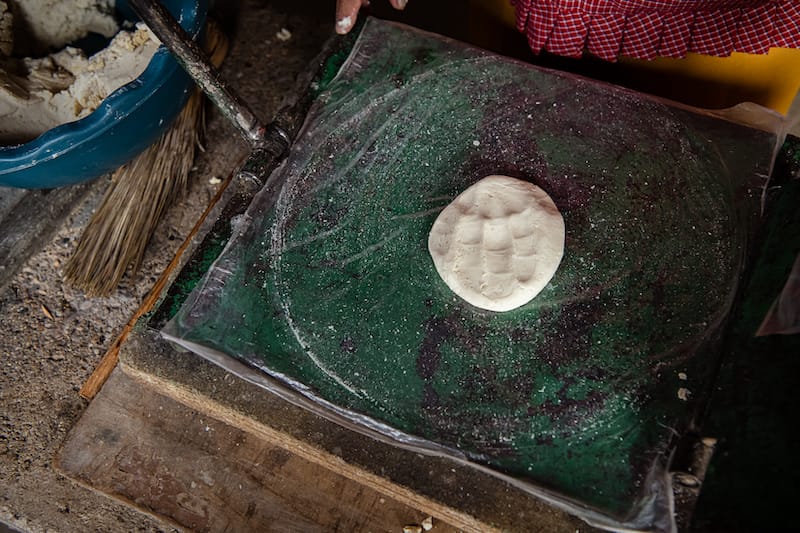
“About 45 years ago, tortilla press vendors toured the villages and gave demonstrations in the main square teaching women how to implement their wooden tortilla presses, so my grandmother was one of the first generations of tortilla makers who started using the wooden press. Iron presses became popular about 30 years ago, as they were more effective for producing more tortillas in a shorter period. The iron is easier to clean and more stable as a tool,” explains Oswaldo Ignacio López, Doña María’s great grandson and the 18-year-old founder of Raíces de Aquí para Allá, a project whose mission is to promote the traditional techniques of corn production and tortilla making among youth in his community.
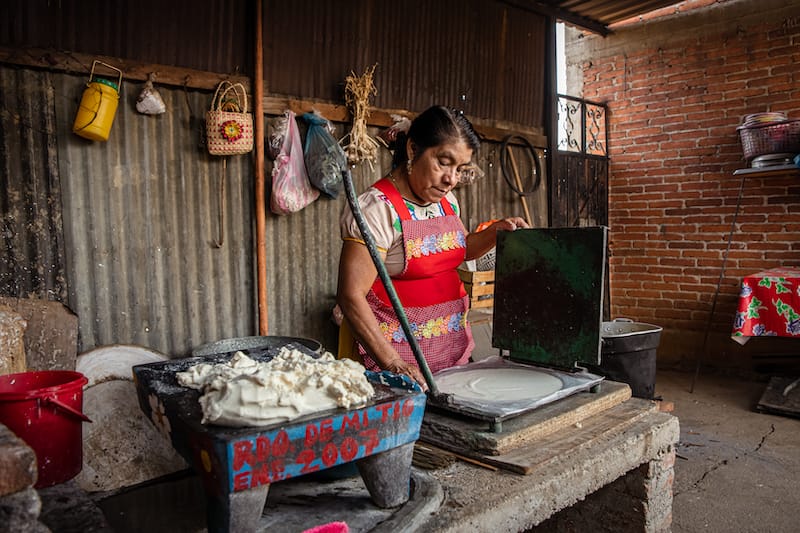
The hand-pressed tortilla technique is not the only tortilla making element that needs to be guarded. The preservation of the native varieties of corn is, undoubtedly, the most important challenge for farmers, tortilla makers, cooks, engineers, scholars and, of course, the government. The disappearance of the 60 native races of Mexican corn would mean the collapse of an entire culture of gastronomy, rituals and sense of belonging deeply rooted in corn before history could ever register it. The flavors of an authentic tortilla made with native corn and properly nixtamalized goes beyond anything we could explain in words. “There is no other reference for it; it tastes like corn, like good, fresh corn,” explains Doña María.
Amado adds: “Corn and tortillas do not accept established organoleptic criteria. We cannot compare it to anything else. We must create our very own parameters when it comes to taste, and for that we must travel throughout Mexico and try native corns, as many as possible.” Two voices from different backgrounds, but both agree on the same idea – methodological descriptions are not enough to define the broad biodiversity of corn, and therefore, the immense variety of tortillas and nixtamalization “recipes” that exist. “Each type of corn has its own characteristics; tortilla makers need to understand the grain first, and the very skilled ones manage to do that quickly and tailor a particular nixtamalization process for that corn. When you make a tortilla, you are literally dealing with ingredients that are alive,” adds Gabriela Hernández Molina, age 17, co-founder of Raíces de Aquí para Allá, a stylist and a 4th generation tortilla maker.
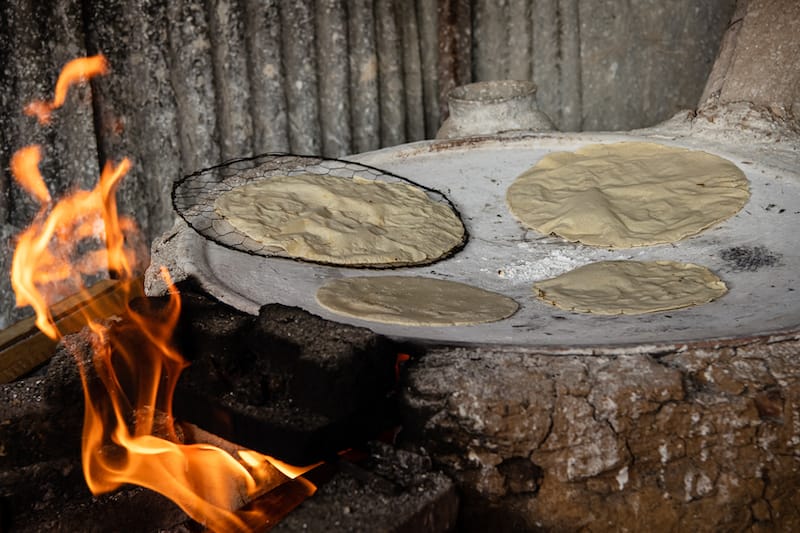
Still, those who have not experienced eating a properly made tortilla might need some basic descriptions. In terms of texture and color, a good tortilla must be soft and flexible: It should not break, as this would indicate a lack of limestone. It should be almost the same color as the corn used in the dough. If the tortillas are a darker shade compared to the corn, then they have an excess of limestone. When it comes to flavor, a tortilla made with high quality nixtamalized corn (non GMO) has a slightly sweet and alkaline aftertaste. Temperature is also a good test, as a bad tortilla when warm can be easily mistaken for a good one to the untrained palate. One of the most interesting ways to detect a good tortilla is through its aroma, particularly when it has been in the fridge for a couple of days. A fine tortilla should not leave an acidic or stale odor in your hands upon touching it. Even if it has not been warmed up, it should have a sort of alkaline, soft corn aroma.
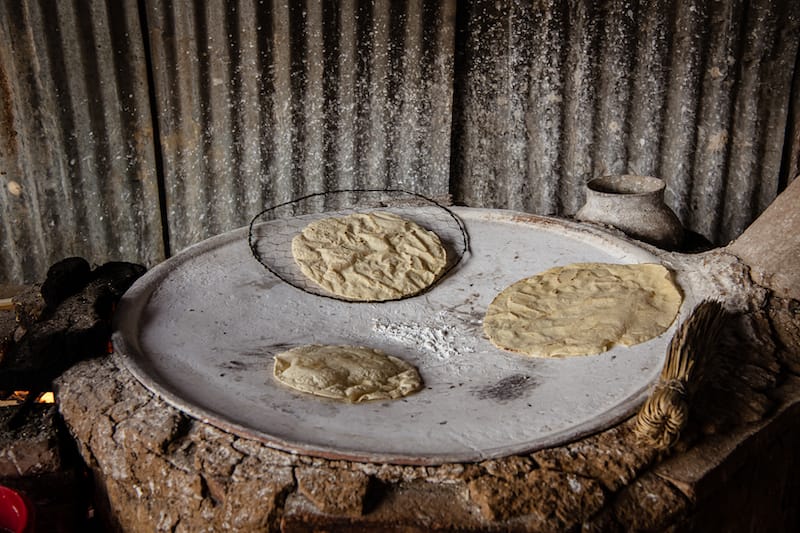
In the end, all the roads lead to corn; its flavor, smell and texture are overwhelmingly strong in freshly made tortillas, which is the best way for consuming it. However, the luxury of eating fresh, warm tortillas is increasingly being reduced to rural households. Throughout Mexico’s cities, we can find tortillerías which sell machine-made tortillas that are often – though not as a rule – made with low quality, GMO corn dough and high amounts of limestone. “The machines are not a problem. If they used high quality corn brought from local producers and processed by nixtamalization experts, people in the cities could have access to real tortillas,” reflects Gabriela. Unfortunately, the cost of high-quality corn and an artisanal process of nixtamal does not match with the modern standards of production.
“Tortilla making is an act of feeling and doing without overthinking, it is all about the senses and intuition. Let the hands dictate the rhythm,” Amado says. There is truth in his words, for it is the tortilla maker’s hands that work the dough, that flip the tortillas on the griddle, that wrap them in a cloth when we buy them straight off the fire in any Oaxacan village market after days of traveling abroad. That pleasure of grabbing a soft, warm tortilla, rolling it up and feeling the corn echoing in your taste buds is the only cure for the tortilla blues.
This article was originally published on May 30, 2022.
 July 5, 2023 Aguas Casilda: Fresh Take
July 5, 2023 Aguas Casilda: Fresh Take
I first met Socorro Irinea Valera Flores years ago, when Oaxaca was not yet under the […] Posted in Oaxaca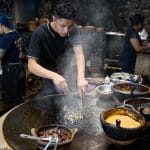 September 5, 2022 Expendio de Maiz
September 5, 2022 Expendio de Maiz
Tucked against the back wall of the Expendio de Maiz kitchen are three massive metal […] Posted in Mexico City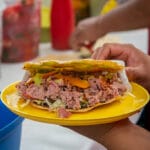 May 10, 2022 Salchicha Ejuteca
May 10, 2022 Salchicha Ejuteca
The history of Oaxacan food is deeply linked to the concept of adaptation. Our culinary […] Posted in Oaxaca
María ÍtakaJalil Olmedo
Published on February 27, 2024
Related stories
July 5, 2023
OaxacaI first met Socorro Irinea Valera Flores years ago, when Oaxaca was not yet under the spotlight of the culinary industry. As part of a high school project in which I had to map Oaxaca’s most “heartwarming” spots for food and drinks, I visited the iconic Aguas Casilda, a nearly 100-year-old storefront that has been…
September 5, 2022
Mexico CityTucked against the back wall of the Expendio de Maiz kitchen are three massive metal pots. Containing cloudy mixtures of corn kernels and limestone water, they seem to sit unattended, when in fact intermittent yet constant attention is being paid to their progress. What is happening is one of the most ancient and important processes…
May 10, 2022
OaxacaThe history of Oaxacan food is deeply linked to the concept of adaptation. Our culinary identity has many chapters: the Mesoamerican native period, the colonial reign of Nueva España and the Mexico of the 20th century, which received another wave of immigrants who brought their gastronomic traditions and let them combine with the native and…

















